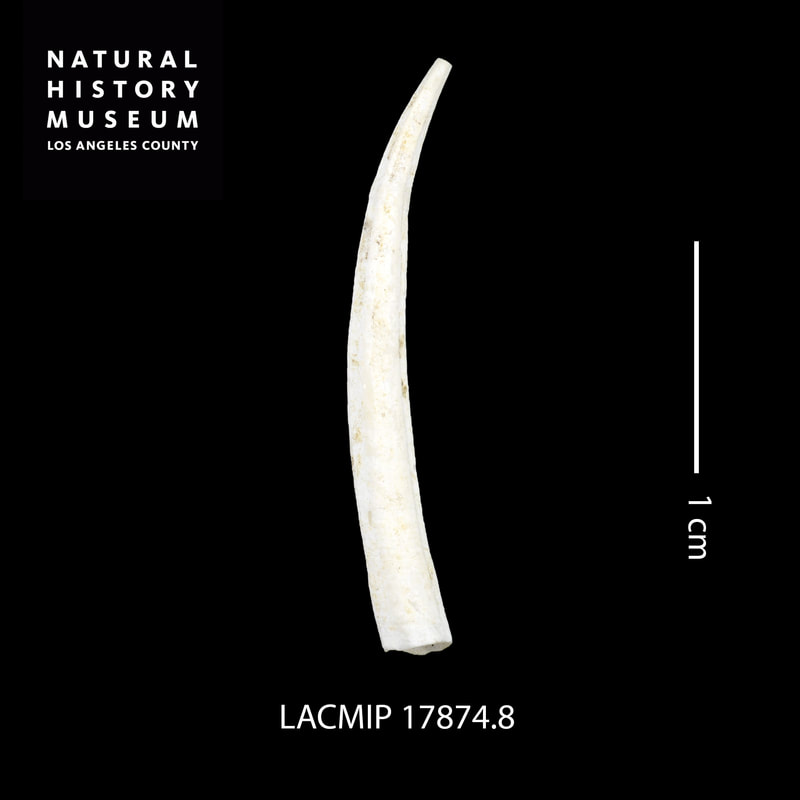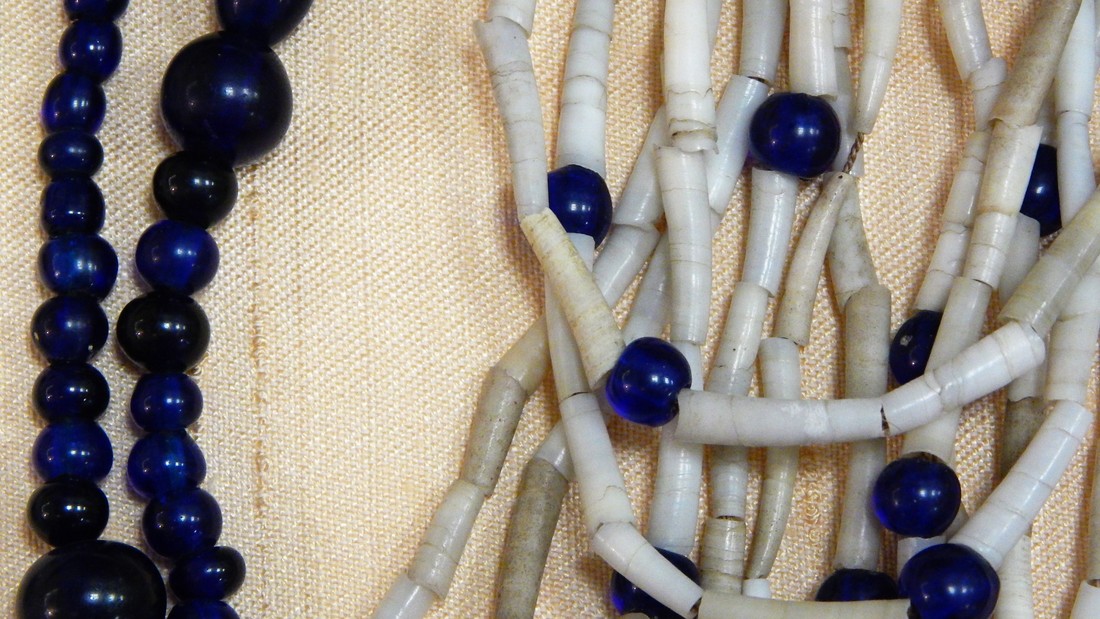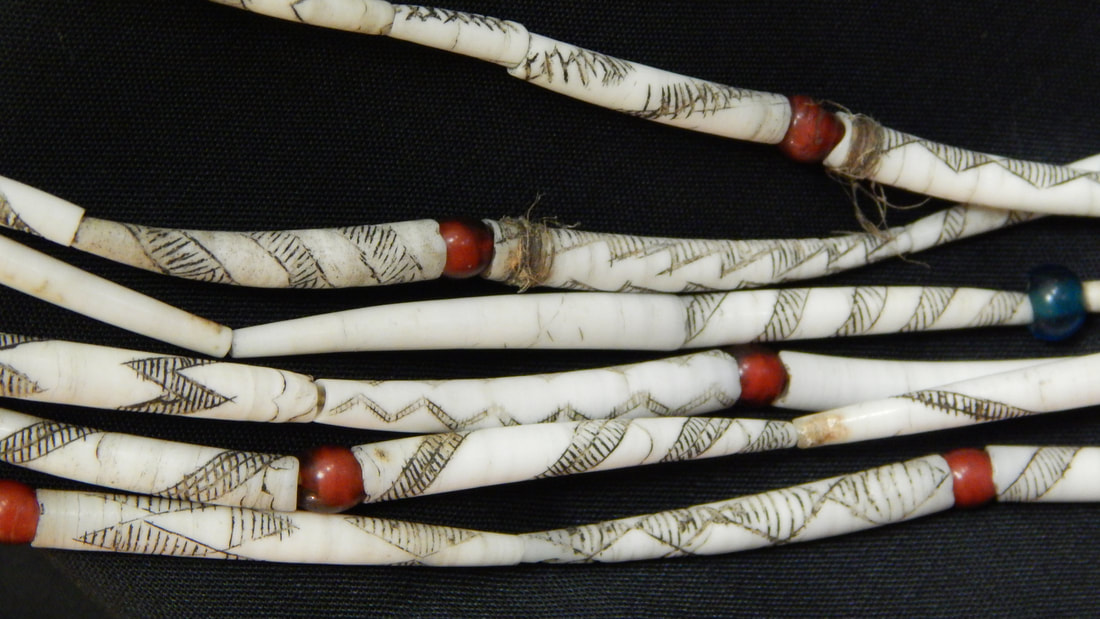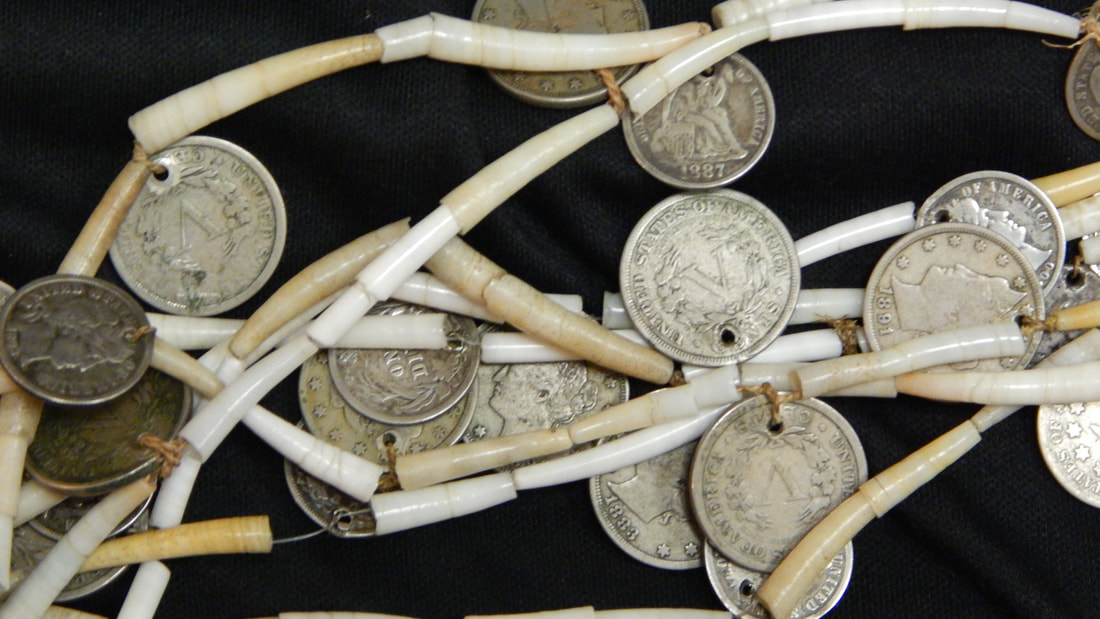| Dentalium, a small ocean mollusk native to the areas around Vancouver Island, was used as a form of currency by tribes throughout the Pacific Northwest and as far east as the Dakotas. Many of the shells were strung on thread made from irises and measured in strands. Men would have special tattoos on their arms to measure strands against to ensure proper payment. These strands of dentalium were stored and transported in small purses made of bone or wood. |
| Dentalium necklaces feature a variety of materials, from trade beads and coins to local materials. The glass beads on the necklaces displayed here were not made in the Americas but brought by European traders who traded the beads to the local tribes for supplies and pelts. The dark blue beads were brought by Russian fur traders who sailed the coast trading with local Native Americans. Other necklaces feature juniper seeds, pine nuts, and native shells like Abalone. Necklaces with hand carved Dentalia were praised as exceptionally valuable due to the skill required to carve the shell without breaking it. |





 RSS Feed
RSS Feed